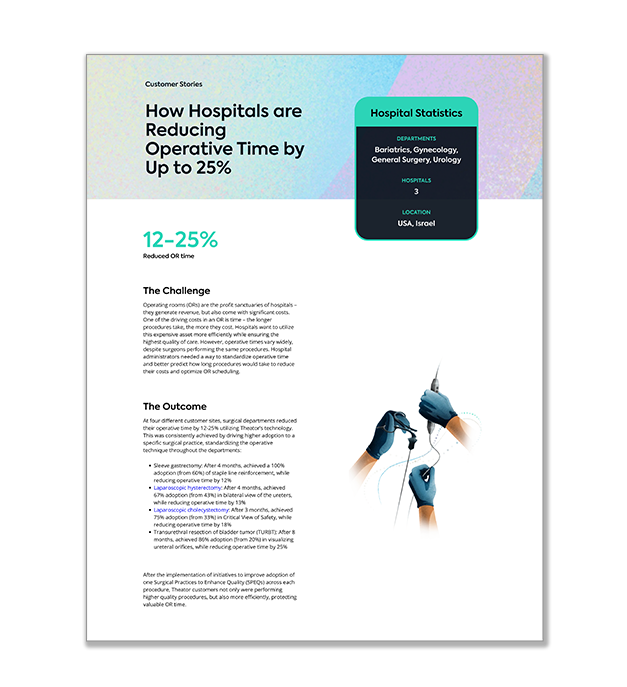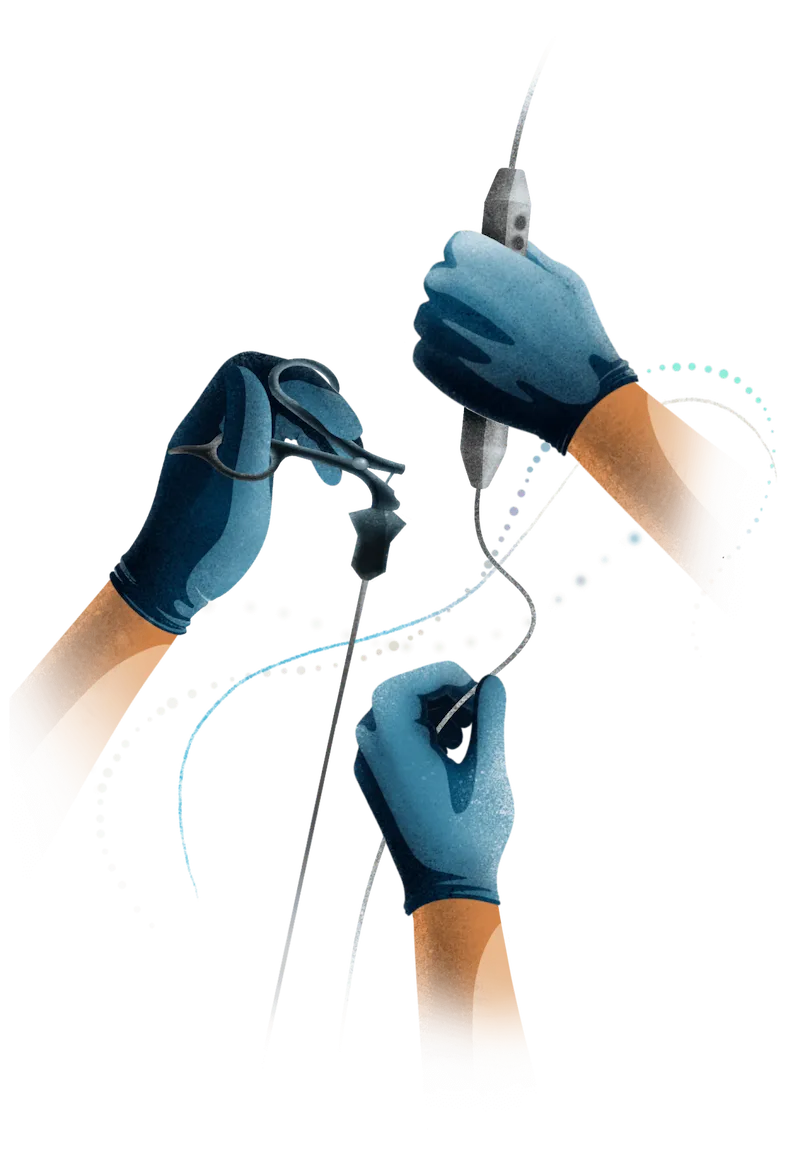How Hospitals are Reducing Operative Time by Up to 25%
![]() Jordan
on
May 21, 2024
Jordan
on
May 21, 2024

Customer Stories
How Hospitals are Reducing Operative Time by Up to 25%
Hospital Statistics
Departments
Bariatrics, Gynecology, General Surgery, Urology
Hospitals
3
Location
USA, Israel
The Challenge
Operating rooms (ORs) are the profit sanctuaries of hospitals – they generate revenue, but also come with significant costs. One of the driving costs in an OR is time – the longer procedures take, the more they cost. Hospitals want to utilize this expensive asset more efficiently while ensuring the highest quality of care. However, operative times vary widely, despite surgeons performing the same procedures. Hospital administrators needed a way to standardize operative time and better predict how long procedures would take to reduce their costs and optimize OR scheduling.
The Outcome
At four different customer sites, surgical departments reduced their operative time by 12-25% utilizing Theator’s technology. This was consistently achieved by driving higher adoption to a specific surgical practice, standardizing the operative technique throughout the departments:
- Sleeve gastrectomy: After 4 months, achieved a 100% adoption (from 60%) of staple line reinforcement, while reducing operative time by 12%
- Laparoscopic hysterectomy: After 4 months, achieved 67% adoption (from 43%) in bilateral view of the ureters, while reducing operative time by 13%
- Laparoscopic cholecystectomy: After 3 months, achieved 75% adoption (from 33%) in Critical View of Safety, while reducing operative time by 18%
- Transurethral resection of bladder tumor (TURBT): After 8 months, achieved 86% adoption (from 20%) in visualizing ureteral orifices, while reducing operative time by 25%
After the implementation of initiatives to improve adoption of one Surgical Practices to Enhance Quality (SPEQs) across each procedure, Theator customers not only were performing higher quality procedures, but also more efficiently, protecting valuable OR time.




